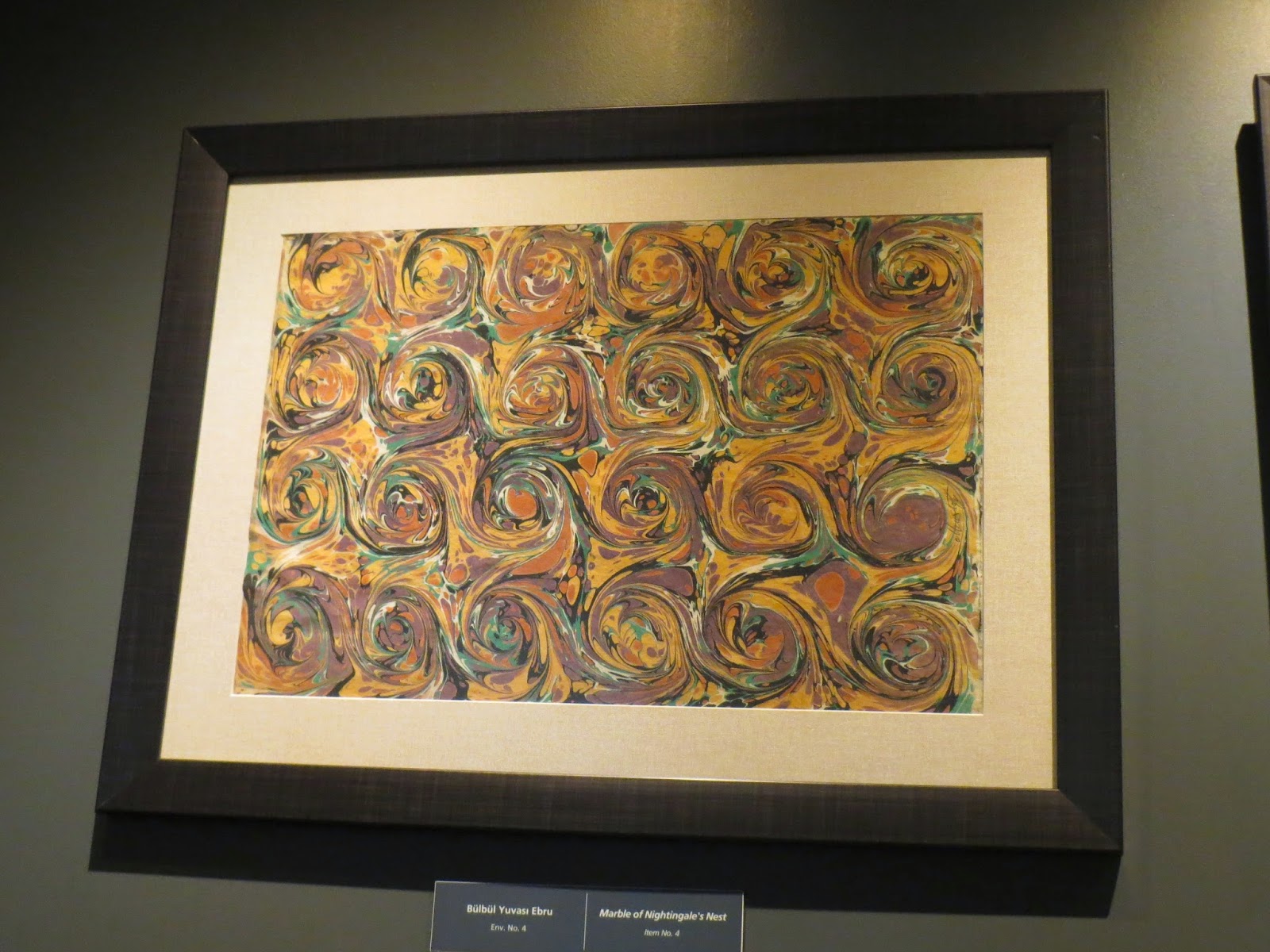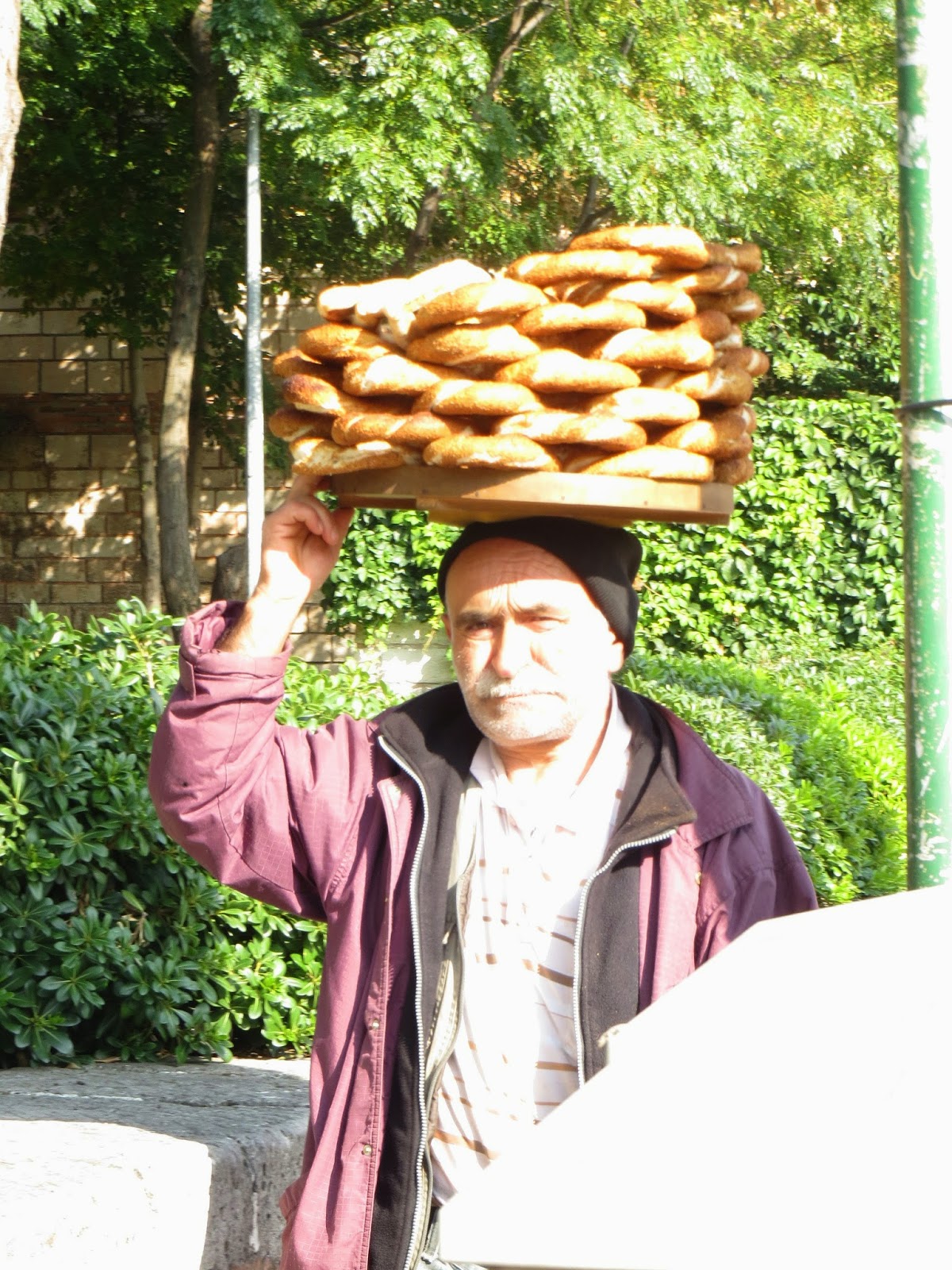Wishing a very Happy
Thanksgiving to my Canadian family and friends today, 10/13! With love and hugs to each of you from Pamukkale, Turkey, Annie
When we were in the Galata
area yesterday, 10/6, we had stopped in at the Galata Mevlevihanesi, a
former monastery containing a semahane or ceremonial hall of the
whirling dervishes, but unfortunately it was closed. We returned this morning
because it sounded fascinating AND because its free admission was included on
the museumkart which expired later today. I've always heard about some male toddlers being referred to as whirling dervishes but had no idea what that really meant until I had read about the real whirling
dervishes before we left the States. The center of the ‘movement’ is in the city of Konya in west central Turkey which we had hoped to visit. But even on a 97 day
long trip, we had to cut out some places and Konya was one because it's hard and time
consuming to get there. We are stopping in the Cappadocia region, east of Konya, and have plans to see a dervish ceremony there.
 |
| A street musician outside the Mevlevhansei |
 |
| This was not the main entrance, just some exhibits there. |
 |
| Various types of Dervish hats. |
 |
| Dated 1329 |
The Mevlevihanesi was constructed in the
late 15th C. and is the oldest surviving dervish monastery in Istanbul although it has been
rebuilt several times. The displays covered everything from musical instruments
to traditional clothing. The Mevlevi Sufi order is one of the many mystical
sects of Islam that were banned by Turkey’s leader Ataturk
because of their supposed religious affiliations and religious conservatism.
The founder of the sect, Mevlana, in the 13th C. repudiated the
strictures and hypocrisy of mainstream Sunni Islam. Preaching love, charity and
tolerance, he believed that union with God was possible through contemplation,
meditation, dance and music; hence the ‘whirling' ceremonies in which his
disciples engage. I had of course always heard in the news of both the Sunni
and Sufi sects so it was interesting to learn first hand of the latter from the
perspective of the Mevlevihansei.
 |
| Followers of Sufi are known for their fondness of music, especially the reed flute and drums. |
 |
| Emin Dede, the famous Reed Flutist |
U
pstairs was the star
of the show: a beautifully restored, high ceilinged room complete with wooden
dance floor where the dervishes whirl.
 |
| Wouldn't this floor make a great ad for a wood floor cleaner! |
 |
| You get a sense here of how tall the room is. |
 |
I loved the old
framed Arabic calligraphy; what a work of art. This may be obvious but Turks
speak Turkish and use the Latin script, not Arabic, which is used in the Middle East. However, many of the market sellers do
speak Arabic, I was told, because of the many Arabs visiting Istanbul. They likewise speak at least a smattering of English. However,Turkey is the first country this trip where very
few of the young people we’ve tried to speak to, speak any English.
|
 |
Ivy: Thought of
you throughout this part of the museum as I'm sure you'd have loved seeing
these marble prints. Are you familiar with the style of painting at all and with the artist?
|
 |
| Titled 'Marble of Daisy' |
 |
Seeing the fantastic ‘marble
paintings’ in the museum was an unexpected bonus.
|
 |
The lights in each section of
the Marble Painting Room were on timers so you had to be quick looking at them
or conversely very patient waiting for them to go on again. A bit like so many
of the WC’s in Turkey that are on, I swear, 20 second timers – those lights however,
do NOT go back on!
|
 |
| Titled 'A Verse' and dated 1883/4 |
Hans Christian Andersen’s
very moving description of the Whirling Dervish Ceremony in 1841:
 |
You would NOT
believe the number of whirling dervish items you can buy in Istanbul; it was
just mind boggling seeing their images on plates bowls, key rings, the
omnipresent magnets, and on every size of picture you could possibly ever want.
After a while, you just say to yourself enough already BUT I do regret not
buying one of the hundreds of small black and white with a dash of red prints I
saw. Hope I'll see one in Capaddocia.
|
 |
| What a beautiful name for a graveyard, I think. |
 |
| Look at the tops of the headstones - to me they look like the different types of dervishes' hats. |
 |
| First time I'd seen flushable squat toilets was at the museum - sorry if that's a case of TMI! |
We then walked across the Galata Bridge again and got a bus back to the south side of the Sea of Marmara. This time, I got photos of lots of anglers I'd mentioned in my last post but didn't back up with more than one lonely angler!
 |
| Another one of the beautiful wooden houses we'd seen previously. |
After walking across the bridge, we spent a few hours walking along most of the 6.5 km long Theodosius II’s Land Walls, whose construction began in 413 AD. They were built to accommodate Istanbul’s expanding population and all citizens, regardless of rank, were required to help rebuild them following their collapse in the earthquake of 447 AD because of the imminent threat of attack by Attila the Hun. Most of the outer wall and its 96 towers are still standing but access is limited in some sections because of their crumbling.
 |
According to a
Canadian history buff we met right here, the last time Constatine III was seen
alive in 1450 was at this spot in the Land Walls.
|
 |
This was the most
bizarre sight: plastic vines camouflaging the homes from prying tourists' eyes
or possibly camouflaging the homeowners from the overwhelming amount of trash and debris by the walls in this section. It was apparent that a good part of the walls
are used a hangout for people to meet and drink beer as we saw so much trash,
it was appalling. The further we got out, however, it was evident that we were
in a more affluent area as we saw lots of small vegetable gardens nestled right
up to the walls. I don’t know whether they were ‘community gardens’ or
privately owned.
|
 |
It was amazing
how agile some of the Turks were at climbing up some of the sections as they
were very steep and dangerous in my opinion.
|
 |
We didn't always
play it safe gazing up at the walls - climbed up this section which was easier
to reach especially if you have a helping hand!
|
 |
| UNESCO and historical purists have decried the fact that much of the recent work done on the walls look like new build rather than restoration. This is a perfect example of that. |
 |
| Never have gotten tired of seeing the Turkish flags flying all over. |
Saw literally hundreds of carts all over Istanbul selling simit, sort of the Turkish answer to
the bagel or a NY
street
pretzel; it’s ring shaped, covered in sesame seeds and they sell for only one
Turkish lira, about 45 cents. Neither of us is that wild about sesame seeds so
we gave the simit a pass. The fellow above was selling these simits outside the Silivri Gate, one of several gates we walked past, located between the 34th and 36th fortification towers.
 |
| One of the few flowers we saw all along the walls. |
I said I had had enough of
walking by then and thankfully Steven was in complete agreement so we called it a
day and got on a bus luckily taking us back to the main bus station of Eminonu and then
‘home’ from there on another.






































































No comments:
Post a Comment